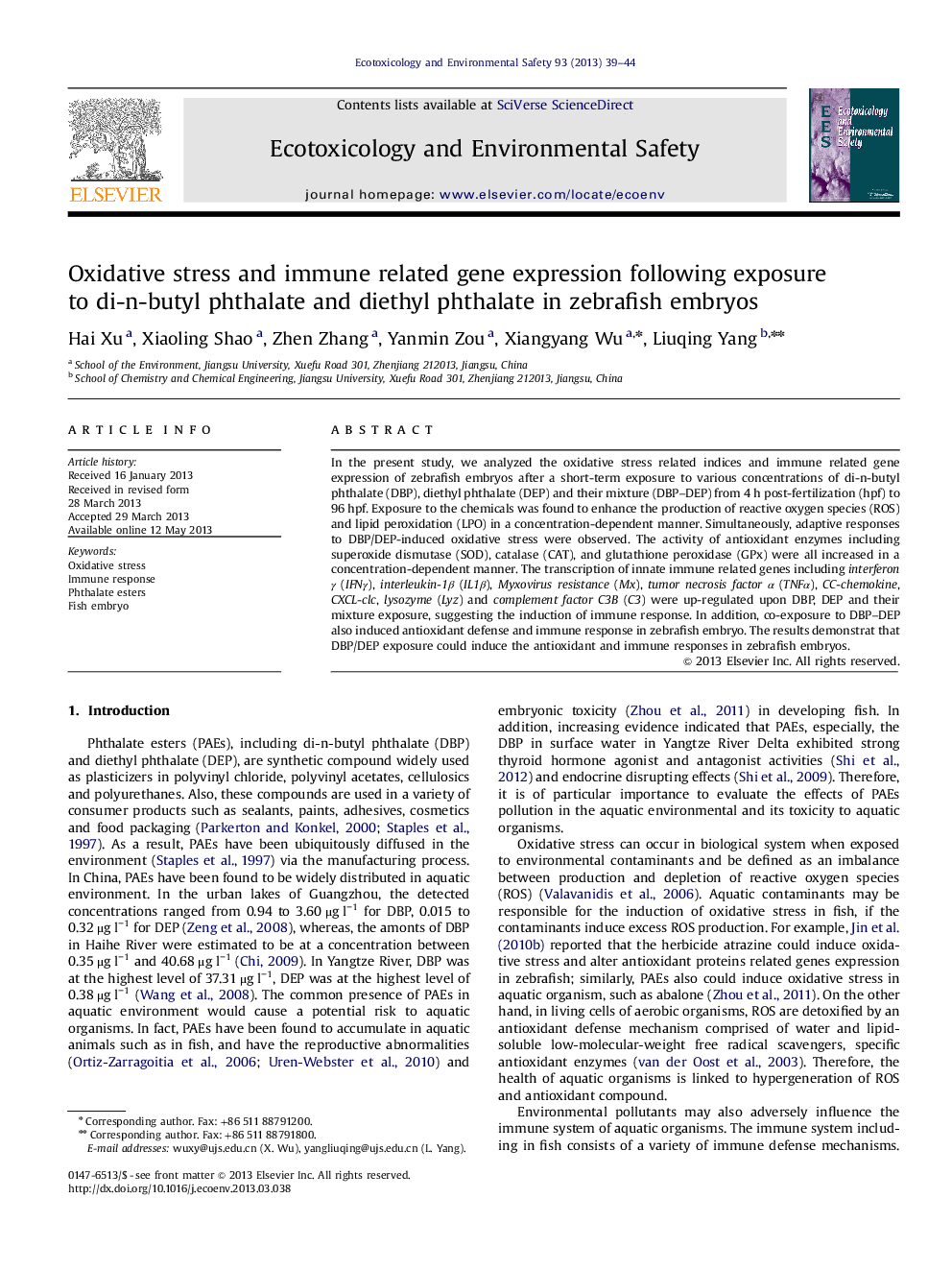| Article ID | Journal | Published Year | Pages | File Type |
|---|---|---|---|---|
| 4420264 | Ecotoxicology and Environmental Safety | 2013 | 6 Pages |
•Di-n-butyl phthalate (DBP) and diethyl phthalate (DEP) induced oxidative stress in zebrafish embryo.•DBP and DEP induced innate immune related gene expression in zebrafish embryo.•Co-exposure to DBP–DEP induced antioxidant defense and immune response in zebrafish embryos.
In the present study, we analyzed the oxidative stress related indices and immune related gene expression of zebrafish embryos after a short-term exposure to various concentrations of di-n-butyl phthalate (DBP), diethyl phthalate (DEP) and their mixture (DBP–DEP) from 4 h post-fertilization (hpf) to 96 hpf. Exposure to the chemicals was found to enhance the production of reactive oxygen species (ROS) and lipid peroxidation (LPO) in a concentration-dependent manner. Simultaneously, adaptive responses to DBP/DEP-induced oxidative stress were observed. The activity of antioxidant enzymes including superoxide dismutase (SOD), catalase (CAT), and glutathione peroxidase (GPx) were all increased in a concentration-dependent manner. The transcription of innate immune related genes including interferon γ (IFNγ), interleukin-1β (IL1β), Myxovirus resistance (Mx), tumor necrosis factor α (TNFα), CC-chemokine, CXCL-clc, lysozyme (Lyz) and complement factor C3B (C3) were up-regulated upon DBP, DEP and their mixture exposure, suggesting the induction of immune response. In addition, co-exposure to DBP–DEP also induced antioxidant defense and immune response in zebrafish embryo. The results demonstrat that DBP/DEP exposure could induce the antioxidant and immune responses in zebrafish embryos.
